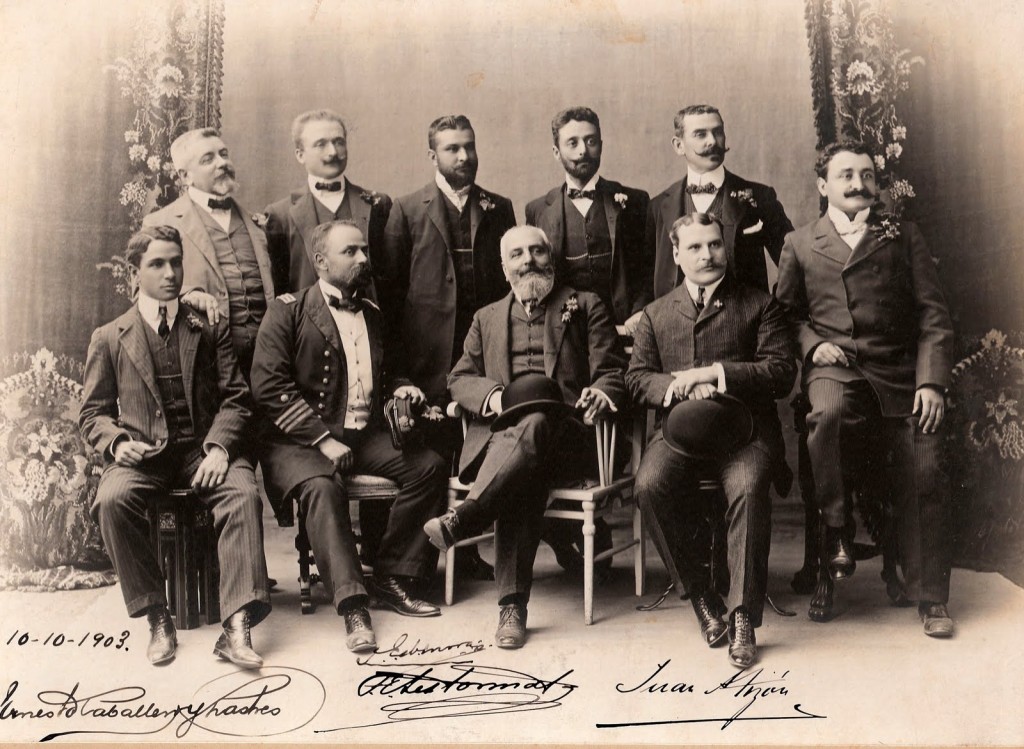A few weeks ago I published an article about “Why I Think You Should Start a Mastermind Group,” opening a conversation with several readers on the topic. Most of the feedback I received was along the lines of, “I’m convinced. Now what?”
So…Here’s an aggregation of mine and other’s experiences with launching mastermind groups. My hope is that it further entices you to start your own group, as well as serves as a quick guide to do so.
Keep in mind that there isn’t a one-size-fits-all way to start or lead a mastermind group. My intention with this guide is not to create rules, but a launchpad for you to experiment with in your leadership style and the unique DNA of your group.
1. Answer the Why.
Napolean Hill, the father of publicizing the mastermind concept, says a Mastermind…
“Consists of two or more people that work in perfect harmony for the attainment of a definite purpose.”
Often people assume a mastermind group is a glorified mens group designed to simply keep people intentionally connected from week to week. However, a mastermind group is just as much about the place you’re going as it is about the people you’re going there with. In other words, it is designed for a “definite purpose,” and establishing that purpose is the first step to successfully launching.
Here are a few examples of the purpose behind historical and modern mastermind groups.
- Carnegie and Hill started their group to study, establish, and broadcast the universal principles of success and wealth.
- The founding fathers launched a mastermind group to discuss the values behind a free society.
- Benjamin Franklin’s group called the “Junto,” launched for self and leadership development by debating questions of morals, politics, natural philosophy and the exchange of business affairs.
- 5 guys and I recently launched a group to discuss and exchange ideas for the modern digital landscape, but quickly transitioned in to professional and self development with material built around business psychology.
A good friend, John Morgan, who has years of experience in leading several groups mentioned something last week that has stuck with me. He said…
There’s a BIG difference between cooperation and harmony. A lot of groups out there have cooperation but few operate in true harmony. Those who do are incredibly successful. Having a clear aim that everyone in the group has agreed on is a big step towards harmony.
2. Set Barriers of Entry.
In order to protect the momentum and mutual fulfillment of the group, you cannot simply invite all your closest or most trusted friends and hope the best. You must be strategic in who you extend the invitation to. Setting a few non-negotiable personality and lifestyle requirements is a great way to preserve the quality of your group.
Pick four to five of traits and don’t settle on inviting anyone that doesn’t match all of them. Here are a few suggestions pulled from Dan Miller’s book, “1+1=3: Creating Your Own Mastermind Group,” (click then search for book at bottom of page) as well as, the requirements I launched my group with. (Be sure to download Dan’s book, if you have any additional questions on mastermind groups)
- Driven toward excellence | Self-starters | Entrepreneurial
- Readers | Thinkers | Devoted to self-development | Avid learner
- Value for brotherhood | Capacity for trust | Interest in relationship
- Bring Diverse Skills, Perspectives & Experiences
- Proven problem-solvers | Resourceful
- Professional Vision | Measurable professional traction (regardless of income or industry)
- Spiritual History
Also, just as important as what to look for when inviting members, is what not to look for. Dan has practical advice in this area as well.
- Known for being a lone ranger
- Are used to being the center of attention
- Have a track record of failed relationships or businesses
- Want a captive group to proselytize or prospect
3. Choose Curriculum & Structure.
One of the largest risks you run as a leader of a mastermind group is losing momentum and mutual benefit for all parties involved. A couple of the most important ways to avoid this from happening is establishing a general structure of how meetings will be run and determining at least the first three months of curriculum.
Regardless if you plan to bring in outside guests and speakers regularly or not, reading a book together is a great way to keep everyone committed and connected. Depending on the purpose you’ve chosen for the group, there are several ways to find great books in any given genre of content. (One of my favorite techniques is to simply cross reference multiple book suggestion lists from your favorite influencers in the field. Learn more about this here.) The one thing to remember is to experiment with what kind of books work best for your group. Hold the curriculum lightly and be willing to pivot if you get halfway through a book and it isn’t benefiting the group.
HOW you lead a meeting from week to week isn’t as important as the consistency in which you lead it with. Here’s a quick outline of a potential structure.
- 8am-8:15am: Breakthrough Updates. 3-5 people share for 1.5 mins each about POSITIVE breakthroughs during the week.
- 8:15-8:25am: Designated member opens conversation about the weekly reading with a brief overview, a thought about their favorite part, and an open question for feedback.
- 8:25-9am: Open discussion built around or off of the reading content. Each person is limited to a 2 minute sharing period at a time.
- 9-9:15am: Conclusions and discussion wrap up.
- 9:15-9:25am: Advocacy session. There are several exercises to be done here, but one of my favorites is the hot seat. Simply put, one person is targeted each week as the every person in the group encourages them or advocate for them in one way or another.
- 9:25-9:30am: Leader presents reading and agenda for next week.
4. Make Formal Invites.
Believe it or not, but this could be the most important stage of launching a group. You have the chance in your invitation process to set the bar high in terms of the value and commitment placed on the group by its future members.
I have a good friend that waited a full year before choosing the twelve he wanted to invite. Once he did, he created real momentum to the launch of the group by making intentional and personal invitations.
5. Communicate Focus, Expectations & Curriculum.
Even if the culture and goals are crowdsourced among the group, use the first meeting as a focused session to establish the expectations and curriculum. At the very least, answer for the group:
- What, exactly, the group is.
- Why the group exists.
- Who is there, and why they were invited.
- Where you, as a group, want to be 6 months from now.
- How you’re going to arrive there.
Though the Mastermind principle is largely built on facilitation rather than traditional-style leadership, I’ve found it incredibly important for one person to take the reigns in the beginning. Consider my recent experiences as a case study.
Five months ago, I launched two mastermind groups simultaneously. At the first, I took week one to answer the bullets above and invited the group to contribute to the expectations of our time together. At the second, I experimented with a more pluralistic leadership approach, letting it take shape organically and be defined overtime by it’s members. The second group has yet to find its feet five months later, while the first had immediate buy in and impact.
Once off the ground, I strongly advocate that the founder of the group play more of a facilitation role than a dominating leadership one. However, direct and momentum-building communication is necessary from the founder early on.
My hope is that this practical guide not only further entices you to launch a group of your own, but that it provides a clear roadmap for you to do so. If you have additional questions, be sure to read these resources for help and comment below.
ADDITIONAL RESOURCES: Creating Your Own Mastermind Group, by Dan Miller | Think, and Grow Rich, by Napoleon Hill | Iron Sharpens Iron: The Power of Mastermind Groups, by The Art of Manliness
Does this quick guide help or are there more questions to be answered? If you have more, simply leave a comment below and lets find someone with the answer.
-
fdfgggggg
-
http://www.biscuet.com Biscuet
-
http://www.kylechowning.com Kyle Chowning
-
http://www.alexbarker.org Alex
-
http://readtoleadpodcast.com Jeff Brown
-
http://fartilfem.com/ Marcelino Gauguin
-
http://maillotbayernmunich.1to1elite.com/ MAILLOT BAYERN MUNICH LIGUE CHAMPIONS
-
Colin

